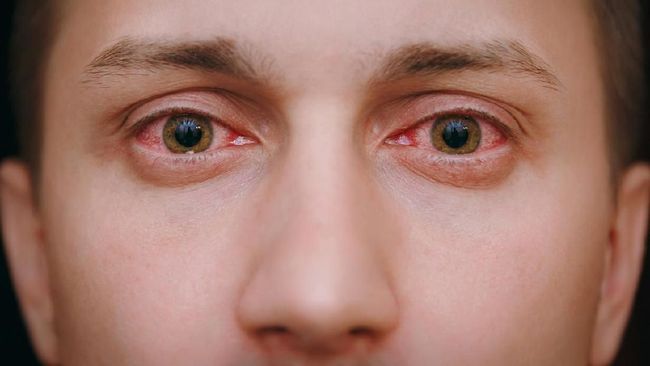Jakarta, CNN Indonesia —
When eye start to blush most people will think that this is just an eye irritation. But red eyes can also be due to high blood sugar.
If you have diabetes, make regular visits to the eye doctor. High blood sugar can cause problems such as blurred vision, cataracts, glaucoma, and retinopathy. Quotes WebMD, in fact, diabetes is the leading cause of blindness in adults aged 20 to 74 years.
This condition is known as diabetic retinopathy. Diabetic retinopathy is an eye condition that can cause vision loss and blindness in people with diabetes. It affects the blood vessels in the retina. Diabetic retinopathy may have no early symptoms, so you should be especially careful if you already have diabetes.
What’s the sign? At first glance it may look like blurred or blurred vision.
“Their vision may be better in the morning and blurry after they eat a large meal,” says optometrist Kristi Stalker. Cleaveland Clinic.
This happens because high blood sugar levels can cause the lens of the eye to swell, making vision blurry.
Long -term high blood sugar levels can lead to something more serious called diabetic retinopathy, which can lead to vision loss.
Diabetic retinopathy is the most common cause of vision loss for people with diabetes. Quotes National Eye Institute, high blood sugar or diabetes can also make you have other eye problems.
1. Cataract
Having diabetes makes you 2 to 5 times more likely to develop cataracts. It also makes you more likely to get it at a younger age.
Cataracts occur because the lens of the eye is ‘cloudy’ so that it covers your view clearly. Anyone can get cataracts, but people who have diabetes are usually at a higher risk of getting them.
2. Glaucoma
People with diabetes are more likely to develop glaucoma. This problem occurs because pressure builds up inside your eye when fluid can’t flow as it should. This can damage nerves and blood vessels, and cause vision changes.
Anyone with any type of diabetes can get diabetic retinopathy – including people with type 1, type 2, and gestational diabetes (a type of diabetes that can develop during pregnancy) can be at risk for diabetic retinopathy or high blood sugar pink eye.
Your risk increases the longer you have diabetes. Over time, more than half of people with diabetes will develop diabetic retinopathy. The good news is that you can lower your risk of developing diabetic retinopathy by controlling your diabetes and preventing high blood sugar red eye.
(chs)
– .


